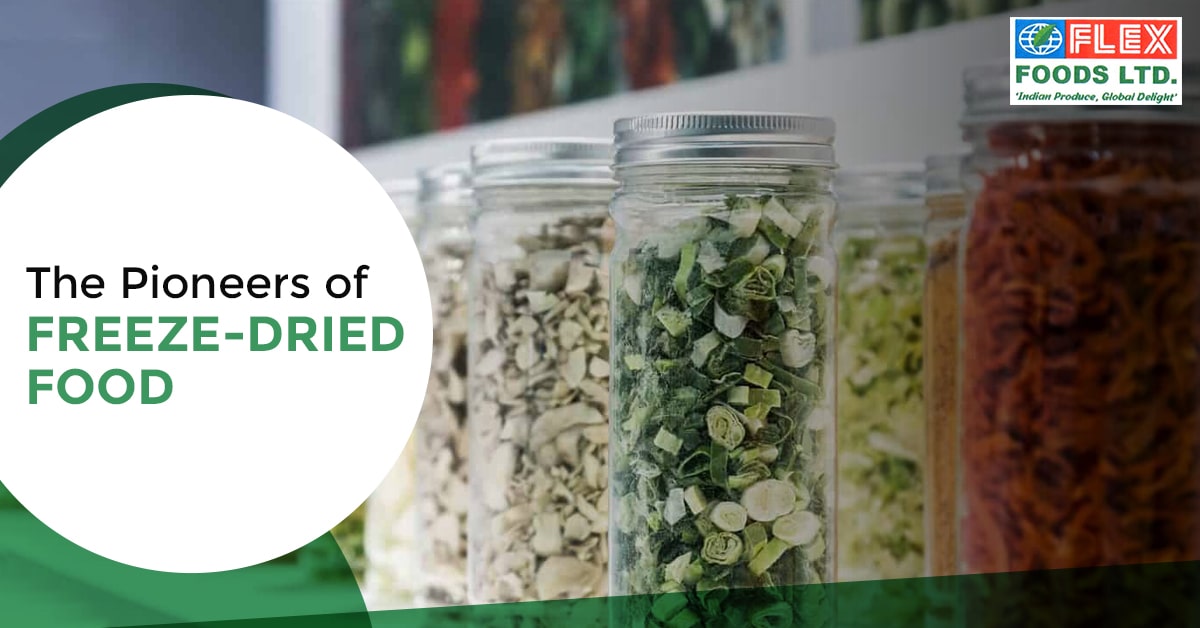Expanding your business globally can be a lucrative endeavor, but selecting the right market for your export product is crucial for success. In this in-depth guide, we'll explore the strategic steps and considerations to help you identify and choose the optimal market for your export venture. From market research to understanding cultural nuances, this comprehensive blog provides a roadmap for businesses aiming to thrive in the international arena.
Conducting Thorough Market Research
Understanding Market Demand:
Begin by identifying markets with a demand for your product. Analyze consumer preferences, purchasing power, and trends to gauge the potential for success. Tools like market surveys, competitor analysis, and industry reports can offer valuable insights on the sale of products like freeze-dried fruits, frozen vegetables, etc.
Assessing Regulatory Landscape:
Be aware of the regulatory requirements in potential markets. Different countries have varying standards and regulations for imported goods. Complying with these regulations is vital for seamless entry into a new market.
Evaluating Economic Stability:
Consider the economic stability of potential markets. A stable economy ensures a reliable consumer base and reduces risks associated with currency fluctuations and economic downturns.
Understanding Cultural and Social Factors
Recognizing Cultural Preferences:
Culture plays a significant role in consumer behavior. Understand cultural preferences, values, and traditions that may impact the acceptance of your product. Adapting your marketing strategy to align with local customs is essential.
Language Considerations:
Language can be a barrier or a bridge. Ensure your product messaging is culturally sensitive and language-appropriate. Translation services may be necessary to effectively communicate with the target audience.
Social Trends and Ethical Considerations:
Stay attuned to social trends and ethical considerations in potential markets. Aligning your product with socially responsible practices can enhance its appeal and acceptance.
Analyzing Competition and Market Saturation
Competitor Landscape:
Evaluate the competitive landscape in potential markets. Identify key competitors, their market share, and strategies. Assessing existing players helps refine your market entry strategy and positioning.
Market Saturation:
Consider the level of market saturation in your industry. A less saturated market may present opportunities for rapid growth, while a saturated market may require a unique value proposition to stand out. This is particularly true in the case of freeze-dried mango.
Logistics and Infrastructure
Transportation and Distribution Channels:
Evaluate the transportation and distribution infrastructure in potential markets. Reliable logistics are crucial for timely and cost-effective product delivery. Consider factors such as shipping costs, transit times, and customs procedures.
Communication and Connectivity:
Ensure that communication channels are efficient and reliable. Accessibility and connectivity influence how effectively you can manage and coordinate your operations in a foreign market.
Financial Considerations and Risk Management
Cost Analysis:
Conduct a thorough cost analysis, including production costs, shipping expenses, and potential tariffs. Compare these costs with the expected revenue to determine the profitability of entering a specific market.
Risk Assessment:
Identify potential risks associated with each market, such as political instability, currency fluctuations, or economic uncertainties. Develop risk mitigation strategies to safeguard your business interests.
Establishing Local Partnerships and Networks
Cultivating Partnerships:
Building relationships with local partners, distributors, or agents can facilitate market entry for IQF frozen vegetables. Local partners bring invaluable insights into the market and help navigate cultural nuances.
Networking and Industry Alliances:
Participate in industry events, trade shows, and networking opportunities. Establishing connections within the local business community can provide valuable guidance and support.
Selecting the best market for your export product is a meticulous process that involves thorough research, cultural understanding, and strategic planning. By delving into market demand, cultural nuances, competition, logistics, financial considerations, and local partnerships, businesses can make informed decisions that set the stage for successful international expansion. This guide serves as a roadmap, empowering businesses to navigate the complexities of global markets and position their export products for sustainable growth and profitability.

